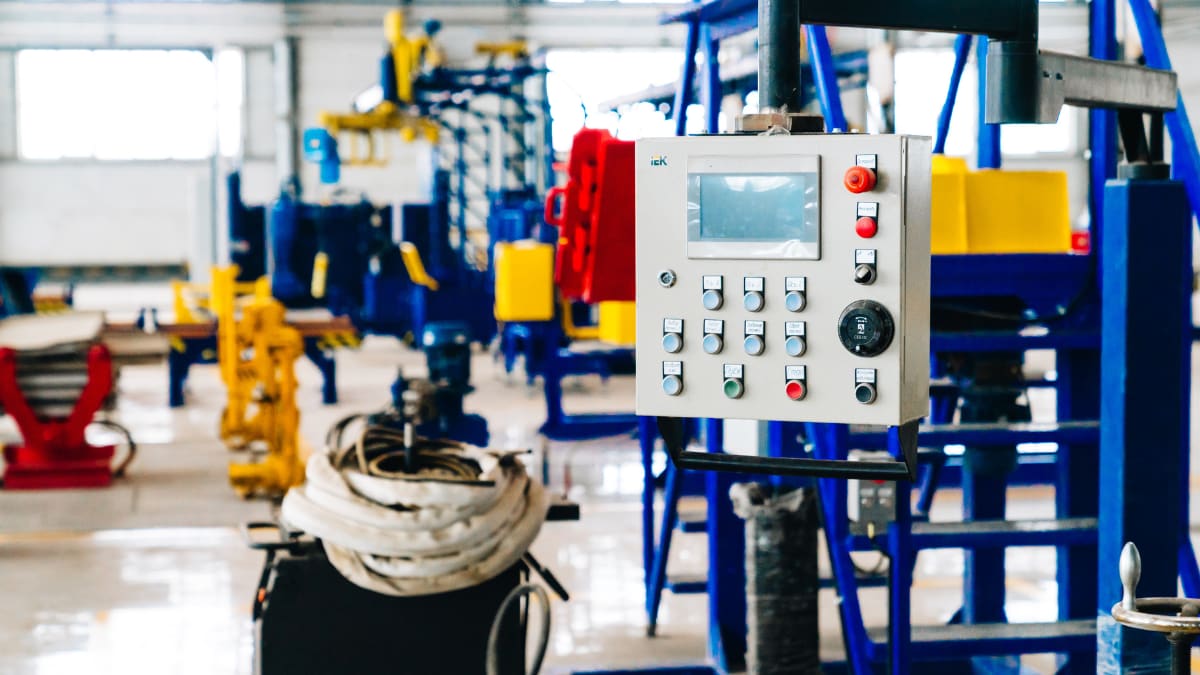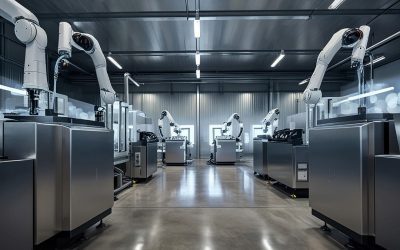Custom automation proves that technology doesn’t come as a one-size-fits-all solution, and rightly so.
We need technology to work for us, to meet our specific business requirements, and to allow businesses to adapt quickly and perform better.
Automation technology is no exception to customisation.
Placing the right technology within operations helps manufacturers streamline key processes and fix production bottlenecks.
It is about tailoring automation solutions to meet your specific manufacturing needs, whether this is automating repetitive tasks, integrating systems, or optimising processes. The aim is to align technology with your strategic objectives.
Tailoring Technology
What does it mean to tailor technology to manufacturing?
Tailoring technology means designing, developing, and integrating custom-designed systems to help manufacturers address unique challenges, optimise workflows, and keep production output and quality high.
Custom goes beyond “off-the-shelf,” tailoring solutions to your needs instead of forcing technology to fit.
The aim is to seamlessly integrate with existing systems. As a result, you gain flexibility and confidence in smoother, more efficient workflows.
Manufacturing processes are unique to your production line and business, meaning the technology you enable and integrate should match these perfectly.
To find out more about the technology currently available and some of the trends in automation, to investigate further, check out our most recent post: “Top Trends in Automation.”
Why Choose Custom Automation?
Not only does customised automation instinctively fit with your business’s current production lines and manufacturing processes, it also offers you:
- Enhanced efficiency – repetitive tasks are automated, reducing time and resource – time and resource that can be used better across other areas of the business.
- Opportunity to scale – with the right automation, you have the versatility to scale with ease allowing you to react to market shifts and changes more proactively.
- A reduction in errors – as manual labour is reduced on repetitive tasks, so is the number of errors, keeping quality and consistency at an all-time high.
- Improvement in productivity – by upskilling and providing further training, you can increase motivation, employee wellbeing, and hence, productivity.
- Reduction in downtime – with the right automated technology, you can see in real time when machinery requires maintenance/work to be carried out. This allows you to get on top of any issues before they affect entire production lines.
- Compliance with industry regulations – meeting all quality standards, adhering to employee safety, and more.
- Reduction in costs – automation can save you money in the long run as manual labour on repetitive tasks is reduced, machinery downtime is limited, and productivity is increased.
- Competitive advantage – automation technology has been designed and developed for you; this provides you with a great deal of competitive advantage.
How do you find the right automation solution?
First, start by carrying out a needs assessment. Look at pain points on the manufacturing floor. Where are there current inefficiencies, bottlenecks, etc?
From here, define clear objectives regarding what you want to achieve.
You then need to find the right automation partner to work with. A team that can deliver on bespoke automation solutions, who can plan and implement thoroughly, and ultimately monitor and optimise the solution.
Once chosen, the team must work on designing and developing the solution, as well as implementing and integrating systems to enhance the outcome.
Testing is a significant part of implementation, as all systems must be compatible, and operations and workflows must be seamless.
Things to be aware of and questions to ask
- Always, always work with a trusted automation partner.
- Be mindful of all data and compliance issues/regulations.
- Communicate and work with your stakeholders; remember that people can be resistant to change, so explain the benefits and show the successful outcomes.
- Continuously monitor. You need to actively manage and monitor automation to get the most from it. Make sure it continuously delivers on meeting your objectives.
- Automation does require initial investment, so have a budget in mind and work within this through the design and development stages.
- Capitalise on expertise, provide training on new technology, upskill staff, and help address the fundamental skills gap the manufacturing sector continues to face.
Why work with Innomech?
At Innomech, we have worked with the manufacturing sector, introducing bespoke automation solutions for over 30 years.
We understand that sometimes off-the-shelf doesn’t always work, and you need a solution tailored to your specific business requirements.
This is where our expertise comes in.
We embrace automation and its benefits, designing and developing bespoke solutions that help businesses grow, thrive, and ultimately, survive.
We hate to sound cliché, but in today’s world, businesses, including those in manufacturing, must be flexible enough to adapt and change when markets shift.
With technology, this can be made easier and avoid significant costs.
To find out more about some of our work and projects we have supported, check out our case studies online.
To discuss your project with one of our team, click here.




